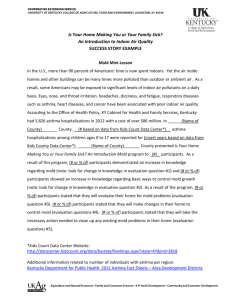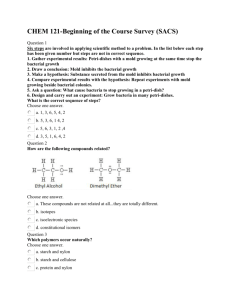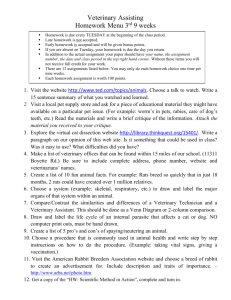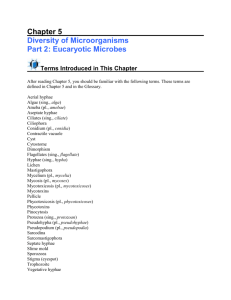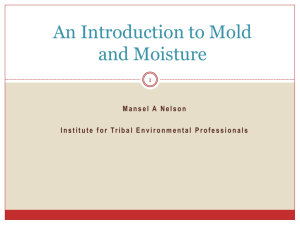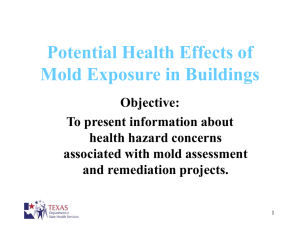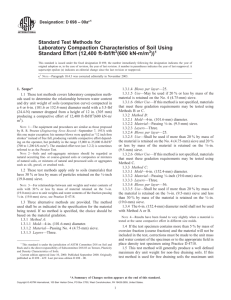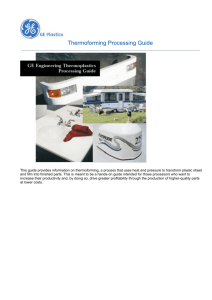Specific Molds 1
advertisement
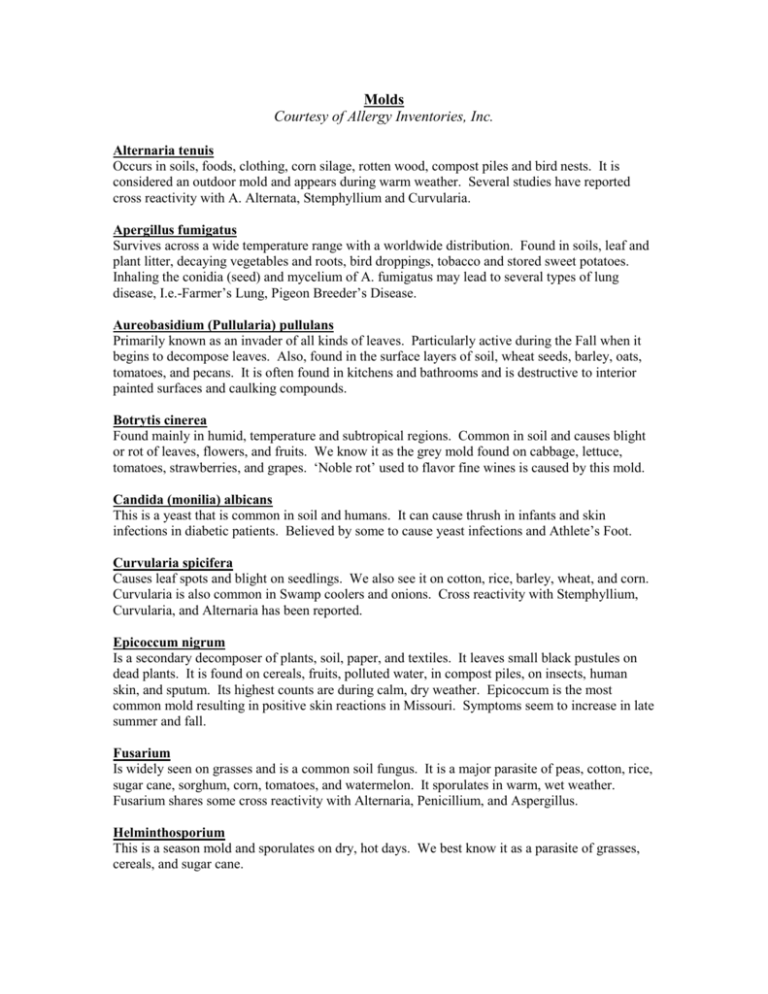
Molds Courtesy of Allergy Inventories, Inc. Alternaria tenuis Occurs in soils, foods, clothing, corn silage, rotten wood, compost piles and bird nests. It is considered an outdoor mold and appears during warm weather. Several studies have reported cross reactivity with A. Alternata, Stemphyllium and Curvularia. Apergillus fumigatus Survives across a wide temperature range with a worldwide distribution. Found in soils, leaf and plant litter, decaying vegetables and roots, bird droppings, tobacco and stored sweet potatoes. Inhaling the conidia (seed) and mycelium of A. fumigatus may lead to several types of lung disease, I.e.-Farmer’s Lung, Pigeon Breeder’s Disease. Aureobasidium (Pullularia) pullulans Primarily known as an invader of all kinds of leaves. Particularly active during the Fall when it begins to decompose leaves. Also, found in the surface layers of soil, wheat seeds, barley, oats, tomatoes, and pecans. It is often found in kitchens and bathrooms and is destructive to interior painted surfaces and caulking compounds. Botrytis cinerea Found mainly in humid, temperature and subtropical regions. Common in soil and causes blight or rot of leaves, flowers, and fruits. We know it as the grey mold found on cabbage, lettuce, tomatoes, strawberries, and grapes. ‘Noble rot’ used to flavor fine wines is caused by this mold. Candida (monilia) albicans This is a yeast that is common in soil and humans. It can cause thrush in infants and skin infections in diabetic patients. Believed by some to cause yeast infections and Athlete’s Foot. Curvularia spicifera Causes leaf spots and blight on seedlings. We also see it on cotton, rice, barley, wheat, and corn. Curvularia is also common in Swamp coolers and onions. Cross reactivity with Stemphyllium, Curvularia, and Alternaria has been reported. Epicoccum nigrum Is a secondary decomposer of plants, soil, paper, and textiles. It leaves small black pustules on dead plants. It is found on cereals, fruits, polluted water, in compost piles, on insects, human skin, and sputum. Its highest counts are during calm, dry weather. Epicoccum is the most common mold resulting in positive skin reactions in Missouri. Symptoms seem to increase in late summer and fall. Fusarium Is widely seen on grasses and is a common soil fungus. It is a major parasite of peas, cotton, rice, sugar cane, sorghum, corn, tomatoes, and watermelon. It sporulates in warm, wet weather. Fusarium shares some cross reactivity with Alternaria, Penicillium, and Aspergillus. Helminthosporium This is a season mold and sporulates on dry, hot days. We best know it as a parasite of grasses, cereals, and sugar cane. Hormodendrum This is the most frequently measured airborne mold wordwide. Indoor counts are typically the result of high outdoor counts. The conidia appears in the spring and peaks either late summer or early fall. This mold can be found in uncleaned refrigerators, on foods, on moist window frames and in low, damp areas. It has also been found in fuel tanks, face creams, paints, leather, rubber, wood products and textiles. Researchers using CIE/CRIE techniques identified around sixty precipitable antigens in this mold. Mucor racemosus Mucor is primarily a soil fungus. It is also found in horse manure, grains, vegetables, nuts, soft fruit and in fruit juice. It is also the dominant mold found in house dust and is considered an indoor mold. Penicillium notatum Is common in forests and grasslands. Penicillium is found on cereals and hay. It is an important house mold and is the ‘blue green’ mold found on stale bread, fruits and nuts. It is also used for the making of green and blue mold cheese. Penicillium reaches its peak concentrations in the winter and spring. It is one of the molds most often producing skin reactions in allergic individuals. It is a potent immunopathogen for asthma. Mutated strains of P. notatum are used to make Penicillin and they do not cross react. Rhizopus nigricans Disperses its spore on hot, dry days. It is found in forest and cultivated soils, children’s sandboxes, pine needles and leaves, sweet potatoes, cold-stored strawberries, stewed fruits, bird nests, feathers and wild bird droppings. Rhizopus is closely related to Mucor. Occupational exposure occurs most often among food handlers during storage, transfer and marketing of strawberries, peaches, cherries, corn, and peanuts. It does grow readily on bread, cured meats, and root vegetables left indoors. Stemphyllium Can be found in forests, grasslands, wheat plantings, beet and citrus cultivation and coffee plantations. It has also been isolated in polluted water, tree leaf litter, bark and citrus leaves, tomatoes, wheat and barley. It violently discharges its conidia during the day and when relative humidity drops. Along with Alternaria, Stemphyllium is considered one of the most antigenic molds in the U.S. Trichoderma lignorum Is ranked as on of the most widely distributed of all soil molds from the extreme north to tropical regions. It can grow on other fungi, fallen timber, tapestry, moist dwellings and unglazed kitchen ceramics, mushrooms and tulip bulbs. It does grow rapidly on damp cotton and wool and may be found in damp basements.


